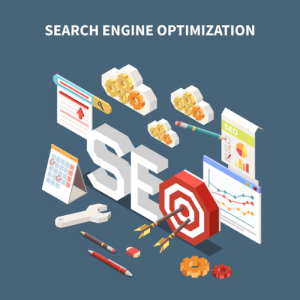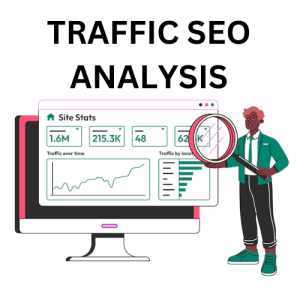THE GREATEST STRAGETY TO DOMINATE ONLINE.

SEO Refers to
The process of optimizing several aspects of a website and its content to increase its visibility and ranking on search engine result pages (SERPs) is known as SEO in the context of digital marketing and online presence. By employing SEO strategies to enhance organic traffic to their websites, businesses hope to boost their online visibility and conversion potential. By targeting the right demographic at the right time, a concentrated approach ensures that your marketing efforts are more successful.
Our goal with SEO is to make you the best.



The fundamental objective of search engine optimization is to increase a website’s exposure and evaluation on search engine result pages (SERPs), as highlighted in “Elevating your website to the Top of Search Results.” Through the use of a range of tools and techniques, it seeks to position a website at the top of search results pages in order to maximize hits and organic traffic. Getting a high ranking is the ultimate goal of SEO. raising the website’s ranking—aiming for the top of search results rather than just making it to the first page.
As a result, optimizing a website to attain the top search engine ranks is the essence of SEO, which increases visibility, traffic, and commercial potential.
SEO Components
Search engine optimization, or SEO, is a general word that encompasses a wide range of search engine optimization techniques. Here, we highlight a few crucial SEO components:
1. KEYWORD RESEARCH AND ANALYSIS: Finding relevant keywords and search terms that the intended audience uses. examining search volume and competition for keywords. recognizing the purpose of the user behind a certain keyword.
2. ON-PAGE SEO-Title tags for on-page SEO are designed for correctness and keywords. creating original material that is thorough and packed with keywords. Using appropriate headings (H1, H2, and H3) in content structure will enhance accessibility and performance. enhancing the structure of the URL. A site hierarchy is established by internal linking to facilitate navigation.
3. OFF-PAGE SEO: Building a strong backlink profile with relevant and reliable domains. taking part in online forums and groups to create links and increase brand exposure. use social media and assessment tools to keep an eye on and manage one’s online reputation.
4. CONTENT OPTIMIZATION: Producing excellent, pertinent, and captivating material that satisfies user demands. preserving readability and natural language while optimizing content for specific keywords. adding multimedia elements to improve the user experience, such as images, videos, and infographics.
5. ANALYTICS AND REPORTING: Using Google Analytics and Google Search Engine to monitor and evaluate website performance metrics. monitoring data on user interaction, organic traffic, and keyword rankings. Make regular reports that assess how well SEO strategies are working and point up areas that need work.
Businesses may establish a well-rounded SEO plan by thoroughly addressing each of these topics, which enhances website exposure, attracts organic visitors and ultimately, generates conversions and business success.

